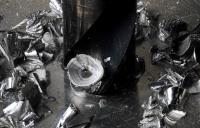 Add My Company
Add My Company
Sign In

Gundrilling refers to a process of drilling deep, precise holes in many different materials, from super alloys to aluminium. The key elements to deep hole drilling methods are tight diameter control, good finish, and straightness.
Deep hole drilling is used across many industries and for a variety of applications, such as armaments, oil and gas exploration equipment, engines, and aerospace equipment being the most common applications for deep hole drilling. In every industry, accurate bore quality is necessary for the proper performance of the end product, for example, a landing gear should easily retract. That's why deep hole drilling should be accurate, time-efficient, and reliable. Wall thickness is one of the indicators of quality and its consistency is vital.
Understanding Uncertainty
One of the key things you should know about gundrilling is that it can be quite unpredictable. For example, no handbook will tell you the optimal speed or feed rate as materials differ in characteristics even when of an expected standard and drill tip wear or oil pressure can impact the effectiveness of the speeds and feeds selected. Instead, the way to choose the right parameters for different materials is for an experienced operator to use conservative parameters and then slowly increase them to the extent the material permits.
In addition, it can be hard to predict the position of the hole. The fact is, even a shallow hole right in the centre can have a measurable amount of straightness error and the length of a gundrill can exaggerate the error. For example, if you have a drill with an L:D ratio of 50, you might have an exit point landing anywhere within an area several times larger than the size of the cross-sectional area of the drill.
Another underappreciated factor is the difficulty that different materials can present. For example, softer materials can be hard to drill because chips will clog the oil feed hole. Hard materials are challenging as well due to tip or tool wear. In this case, only years of training and experience will help you achieve minimal drill wander and wall thickness consistency.
Special Equipment To Measure Wall Thickness
You can drill a hole and machine the outside for a consistent wall thickness. If the drill wanders, it will cause wall thickness inconsistency between the two ends. It's important to monitor the position of the drilled hole using special equipment to effectively measure the wander and then implement the required measure to correct it.
On through bores, this simply involes turning the billet between centres and removing the material from the relevant ends to bring the bar back to true.
On blind bores, the best method is to use a special ultrasonic device to measure the wall thickness by placing an ultrasonic device at different spots around shaft. Measurements with these devices are accurate and you will be sure to identify the end point of the gundrilled hole. These measurements are then used to off-set the billet when set on a lathe the error is turned off the outside diameter leaving the bore to outside diameter tolerance back within microns.
This is one of the reasons we always recommend that the customer starts with oversize material and machines all further detail from the bore produced or indeed, asks us to do this for them. This guarantees a clean up situation and that the billet will be suitable for any and all future applications.
For more information on How To Achieve Wall Thickness Consistency When Gundrilling talk to Hone-All Precision Ltd
Enquire Now
List your company on FindTheNeedle.

